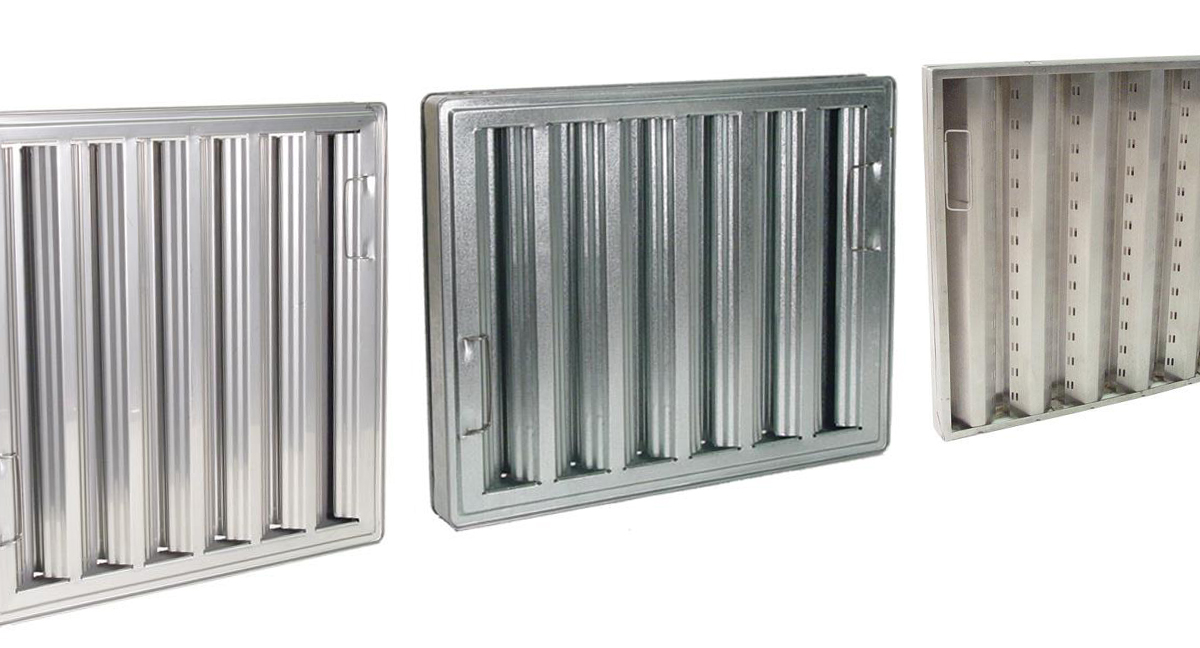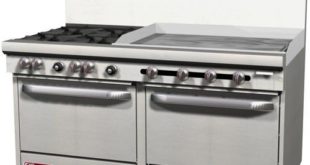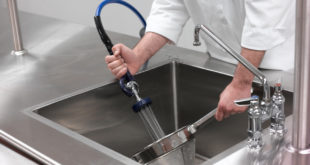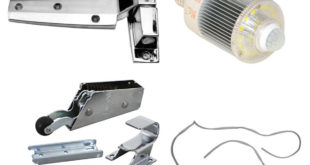 Hood filters might not be the most glamorous item in your kitchen, but you’d be amiss without it. Hood filters are designed to remove smoke, grease and other debris from the air before it hits your ventilation system. Without this line of defense, these materials would build up in your air ducts and become a serious fire hazard. In short, hood filters can help prevent devastating kitchen fires. And if safety wasn’t enough, hood filters are required in order to meet National Fire Protection Association (NFPA) and International Fire Code (IFC) regulations.
Hood filters might not be the most glamorous item in your kitchen, but you’d be amiss without it. Hood filters are designed to remove smoke, grease and other debris from the air before it hits your ventilation system. Without this line of defense, these materials would build up in your air ducts and become a serious fire hazard. In short, hood filters can help prevent devastating kitchen fires. And if safety wasn’t enough, hood filters are required in order to meet National Fire Protection Association (NFPA) and International Fire Code (IFC) regulations.
Have I got your attention now?
Hood filters come in one of three different materials: Aluminum, Galvanized and Stainless Steel. In order to pick the best hood filter for your kitchen, first consider the following: Can customers see into your kitchen? and Do you have a high volume kitchen?
Galvanized Steel is a durable option in the kitchen, but its dull appearance isn’t the most aesthetically pleasing for open kitchen concepts. Aluminum on the other hand features a shiny, attractive finish, but it’s softer than other materials and will need to be replaced more frequently. Stainless steel is often used for durability and an attractive appearance, but stainless steel hood filters do cost more upfront.
Once you determine which material best suits your need, next comes construction. Hood filters are constructed as either welded or riveted. The frame of a riveted hood filter is held together by rivets and a series of individual baffles; this type of construction makes for a more flexible hood filter causing the rivets to loosen over time. Conversely, the baffles on welded hood filters are made out of a single piece of metal which makes for a more durable and rigid design. As you’d expect, these heavy duty filters will cost you more up front, but could last longer in the long run.
Finally, before you purchase any hood filter for your kitchen be sure you size it appropriately. The size of the hood filter will be roughly a ½ smaller than the size listed on the site. That means that a 20 by 20 inch hood filter will actually be sold as a 19 ½ inch by 12 &frac; inch filter. Industry practice always states the vertical dimension first (with baffles running up and down) and then the horizontal dimension second. Still have questions about how to size appropriately? Check out the sizing calculator on hoodfilters.com.
Cleaning and Maintenance
Dirty hood filters can be a threat to your safety in the kitchen. Not only can it cause an extreme fire hazard, but other common issues include smoky air, excess heat in the kitchen and increased utility costs due to the added strain on the exhaust system. The best way to extend the life of your hood filters is by keeping them clean. Hand washing with hot, soapy water is the best way to remove grease and grime from your hood filters. Just make sure you use non-abrasive sponges and avoid harsh chemicals that could cause corrosion. If you don’t have the time to hand wash, the dishwasher is an option for faster cleaning—just make sure your dishwasher doesn’t use harsh cleansers to avoid corrosion.
Have more questions about hood filters and how to order them? Check out our hood filter buying guide »
 Corner Booth Blog | TundraFMP Restaurant Supply, News & Equipment Blog
Corner Booth Blog | TundraFMP Restaurant Supply, News & Equipment Blog



